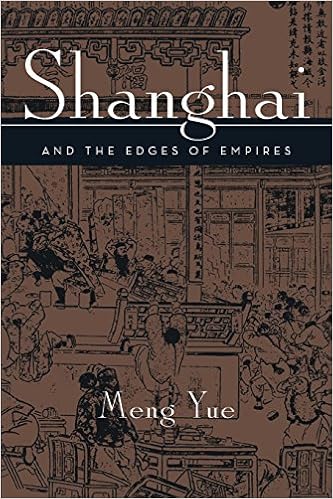
By Giovanna Sonda
Via concentrating on the interaction among fabric, social and narrative dimensions of the town, this ebook examines city complexity, specifically the dynamic and entangled nature of city concerns, and places ahead a thought of the town as an city texture. Taking an leading edge interdisciplinary technique, it perceives the best way towns are geared up as a stressed stratification of fabrics, meanings and makes use of, and offers with the interrelationships among actors, areas, administrative rationalities and artefacts. It argues that city cloth is 'manufactured' during this interaction among imagery and practices (of the entire stake-holders, together with planners, urban managers, and town users). Illustrated by means of in-depth empirical experiences from throughout Europe and Latin the USA, the ebook explores fabric and symbolic features of the city event. specifically, the participants specialize in the fewer seen methods of organizing city areas, comparable to these enacted and embodied through neighborhood information, artefacts equivalent to signs, maps, laws, public acts, inventive performances, sensory event, and collective stories. The ebook bargains an articulated dialogue on those quite a few technique of spatial service provider, thereby supplying insights into events of clash and presenting cutting edge methods ahead for reinforcing city sociability.
Read Online or Download Urban Plots, Organizing Cities PDF
Similar urban books
The tiny state of Kuwait grabbed the world's recognition in the course of the Gulf struggle, in which its ordinary petroleum source grew to become the envy of its neighboring state of Iraq. yet Kuwait's background is going again lengthy earlier than any oil was once came upon, again to Mesopotamian settlements as early as 3000 BCE. excellent for prime tuition scholars in addition to basic readers, background of Kuwait bargains a entire examine how one of these small nation may possibly, primarily, rule the area with only one traditional source.
Shanghai and the Edges of Empires
Even sooner than the romanticized golden period of Shanghai within the Thirties, the famed Asian urban was once impressive for its strong point and East-meets-West cosmopolitanism. Meng Yue analyzes a century-long shift of urbanity from China’s heartland to its shore. through the interval among the decline of Jiangnan towns corresponding to Suzhou and Yangzhou and Shanghai’s early twentieth-century upward push, the overlapping cultural edges of a failing chinese language royal order and the encroachment of Western imperialists converged.
With the arrival of AIDS, the proliferation of gangs and medicine, and the uneasy sensation that enormous Brother is absolutely observing us, the darkish aspect of city dwelling looks overshadowing the brighter part of enjoyment, liberation, and chance. The Urbanization of Injustice chronicles those bleak city photographs, whereas taking to activity exclusivist politics, globalization conception, and superficial environmentalism.
City casual settlements or slums are starting to be quickly in towns in sub-Saharan Africa. frequently, a sewer process isn't really current and the commonly-used reasonably cheap onsite wastewater dealing with practices, often pit latrines, are usually unplanned, out of control and inefficient. therefore, such a lot families cast off their untreated or partly taken care of wastewater on-site, producing excessive a great deal of foodstuff to groundwater and streams draining those parts.
- Ethnic minorities in urban areas: A case study of racially changing cummunities
- On the Rationality of Borrowers Behaviour: Comparing Risk Attitudes of Homeowners - Volume 21 Sustainable Urban Areas
- Down the Asphalt Path
- Selected Reading in Quantitative Urban Analysis
- From the ground up : translating geography into community through neighbor networks
- Roman Corinth. An Alternative Model for the Classical City
Extra resources for Urban Plots, Organizing Cities
Example text
In other terms, the Parisian signage is meant to equip a rider who could be all alone. By following the sole signboards directions she could still manage to find her way within the transportation network. The Parisian signage thus performs a very specific public setting. In order to more precisely understand it, one can ask one of the favourite questions of actor-network theory: what is delegated in this artefact? We saw that signage is not representational. It then has nothing to do with the public display of matters of concern, that is, things we collectively consider (Latour 2005a).
It is the case of certain colours, or shapes, that are used to operate a real ‘semiotization’ of the signboards. Fraenkel (2006) constituted this kind of conventional work as a key issue of her theory of writing acts: some actions can be fully inscribed in the material support. Here, colours and shapes support the differentiation between the boards and the identification of the distinct functions that are attributed to them. Such a semiotic investment relies on a standardization process. In order to accompany reactive movements, colours and shapes have to remain strictly the same all over the subway network.
Signs are meant to replace and, above all, expand the presence of employees of the carrier who could verbally help the riders. But they also replace the collective of co-present riders. From the designers’ view, the fact that a rider asks the way of another rider is considered as a failure. What is at stake with the omnipresence and the standardization of signboards is not public consciousness, but strictly personal guidance. It seems that this kind of individual gear is currently growing, with the success of numerous Global Positioning System (GPS) devices on the one hand, and real-time information urban displays on the other.



